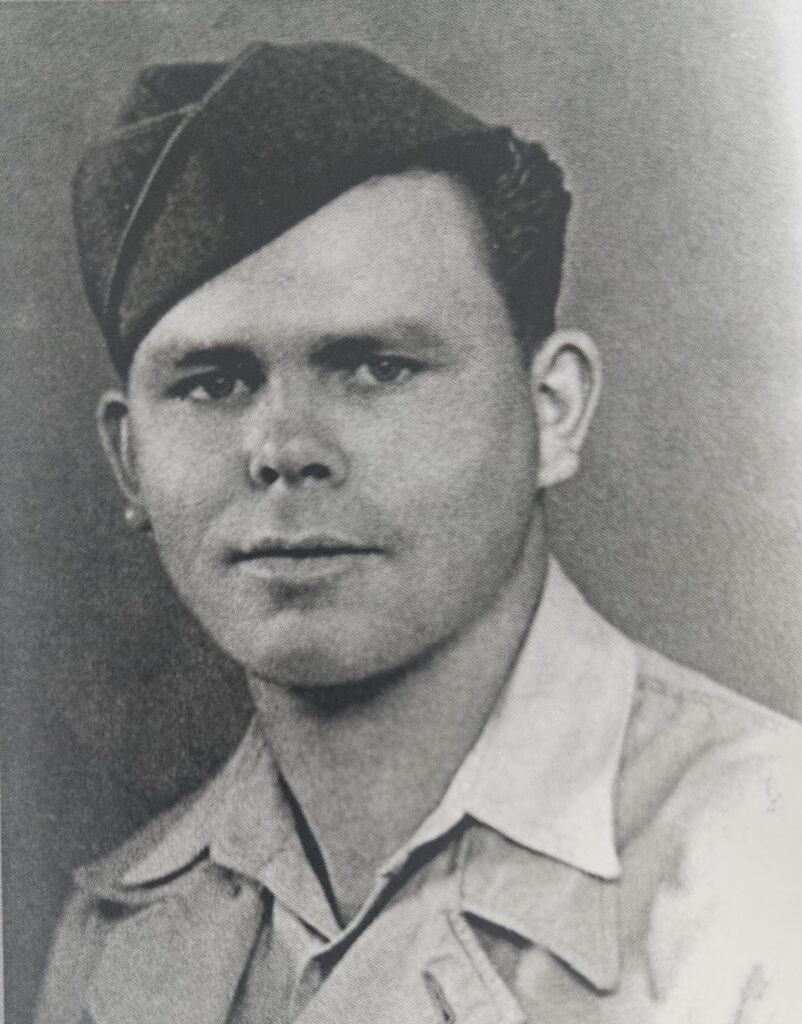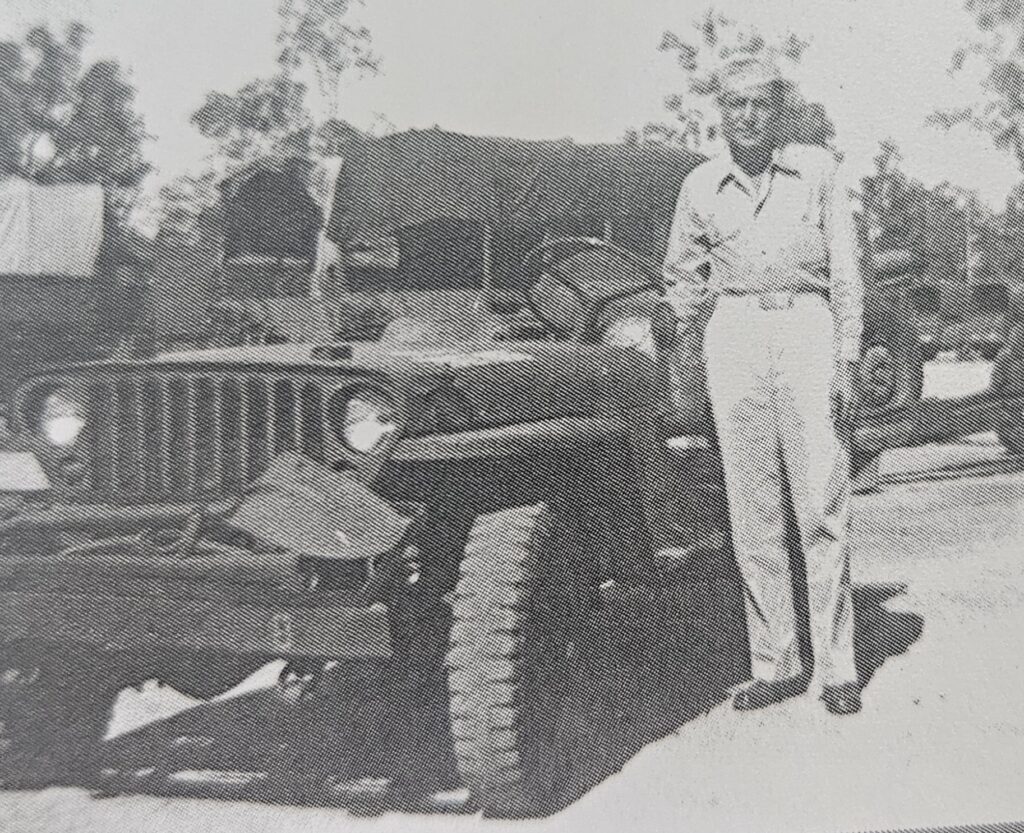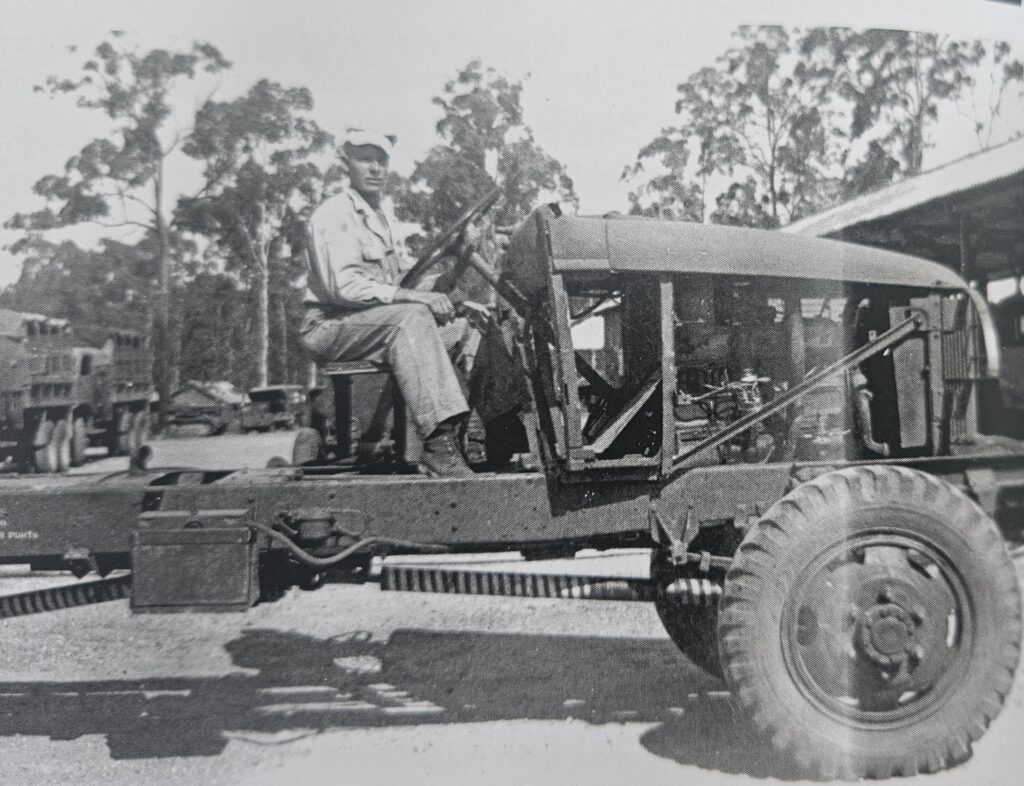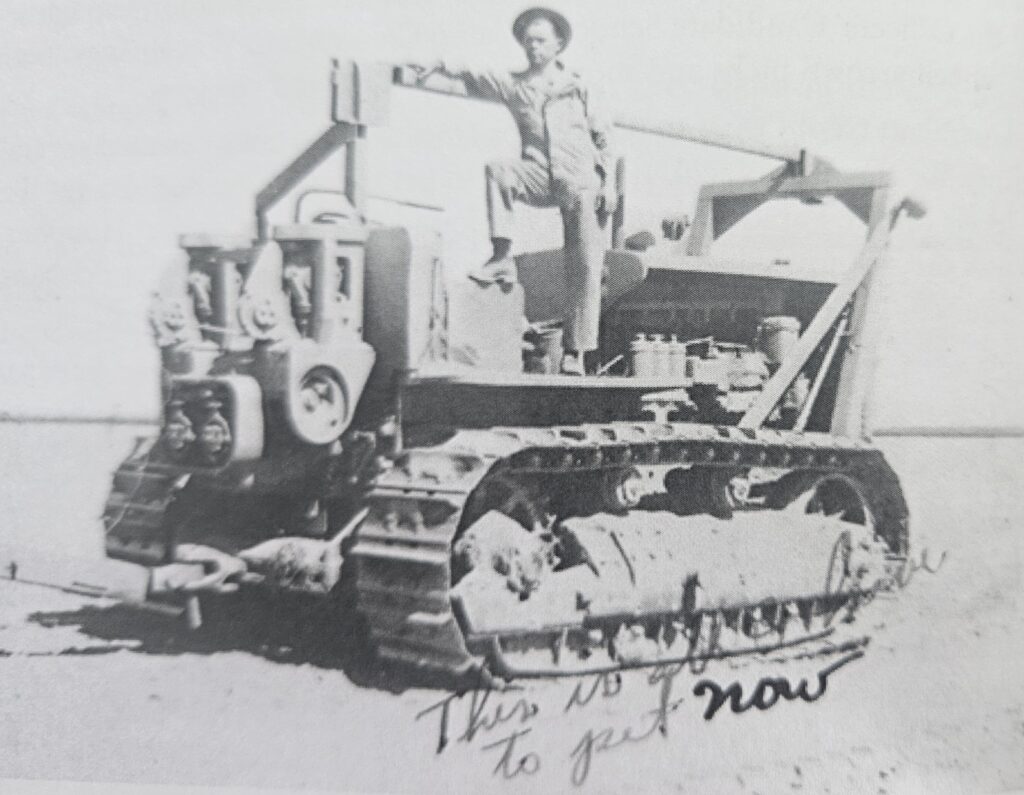
Bryan was in the US Army, 32nd infantry division-“The Red Arrows.”
The departure of their fleet of 43 ships for New Guinea was headlined in the US newspapers – and then they set off from San Francisco with just one light carrier escort! There were 40,000 men-and they had three sleeping shifts to share the bunks.
In the South West Pacific on May 7 and 8, they could hear the sounds of the Battle of the Coral Sea – and were ordered to stand at the rails, rifles at the ready, scanning for submarines. They had to bypass Brisbane and Sydney because of Japanese submarine activity.
Melbourne could only take half the men, so Bryan’s division landed in Adelaide in May 1942 – 20,000 men, and no preparations, no facilities, no food – nothing!
They were taken out of town, where at first, they slept on the ground and had to approach local farmers to buy food! Bryan told of the first few meals including lumps of wool.

In July the 126th regiment were taken by road and rail back across the country to build a new camp at Mt Tambourine in Queensland (later named Camp Cable).
Originally trained for the snowy terrain of Europe, Bryan’s regiment flew out of Amberley for Port Moresby on 15 August – the first US infantry to go to New Guinea.
Their CO decided to go up a parallel track (the Kapa Kapa trail) to reach Kokoda behind the Japanese to support the Australians. They were the only Americans to walk over the Stanley Ranges. It took 43 days, and they lost 40% of their men – but Australians don’t seem to acknowledge that the Americans were there.
By 16 November they were in the Buna offensive, where they lost many more men. Here Bryan was badly wounded when a shell exploded in his “dugout” – just a hole really. He was nearly killed – and in fact his family was notified that he was “missing, believed killed in action.”
But he was flown out, bloated with poison – and taken to Gatton Field Hospital, where he took 8 months to recuperate. (He was deaf and blind for five months). Then he was sent back to duty, to the staging camp on Ascot Racecourse, though “not for combat.”
Officers’ Candidate School
Australian wharfies seemed to go on strike a bit – and a few times they refused to unload the US ships of ammunition and materials we all needed. Bryan was in one skirmish, wherein a US Jeep rammed the padlocked gates at Bretts Wharf, and quite a few fellows on both sides ended up in the river. The ship was then unloaded.
At a parade not long after, MacArthur handed Bryan a clipboard and said, “Pick twenty men…for physical work.” Bryan was a master mechanic – a machinery rather than a civil engineer – but this was considered qualification enough to build the Officers’ Candidate School at Camp Columbia in Wacol. They were given wheelbarrows, picks and shovels, one tip truck and one jeep.
The Australian Civil Construction Corps (mostly older men) erected several buildings for them at Wacol. It was hard to get the skills needed. To get the final levels on the Parade Ground, Bryan found “German George” Hoppner, who was the acknowledged expert grading the local roads for the Brisbane City Council. The council eventually agreed to release him for the job.
Though an “Enemy Alien,” George was not interned. He had been here for many years, and the local Police Sergeant vouched for him. But he had to report to the Oxley Police Station every day. Luckily, he lived nearby, in Rudd Road.
When the school opened, Bryan was kept on as an instructor in mechanical engineering. There were about 140 permanent staff. He also became the first president of the NCO’s club at Oxley-which is how he and I met. Then in 1945, when the facility was no longer needed, Bryan was given the honour of officially declaring the OCS closed.
Lona Grantham 2006


